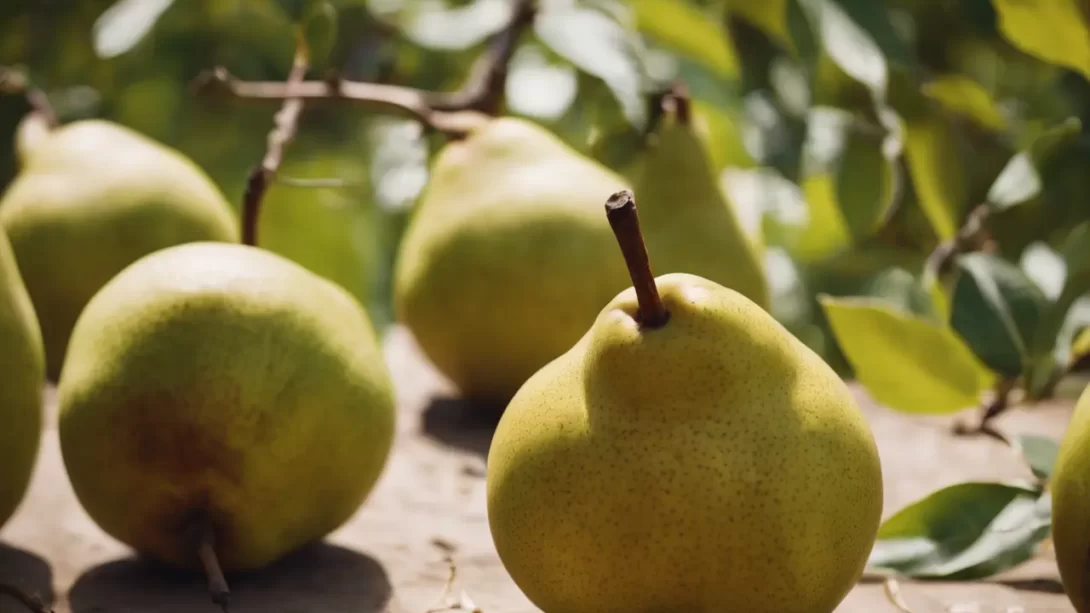Pears, with their distinctive bell shape and sweet, juicy flavor, are a beloved fruit enjoyed across the globe. Originating from regions in Europe and Asia, they have been cultivated for thousands of years. Today, pears are celebrated for their versatility and are a staple in many cuisines. This article delves into the nuanced taste profiles of various pear varieties, offering a comprehensive guide for both seasoned pear enthusiasts and those new to this delightful fruit.
The Basic Taste Profile of Pears
Pears are predominantly known for their sweet and mildly tart flavor, which can be reminiscent of a less acidic apple. The sweetness in pears is often described as subtle and refined, lacking the sharp tang of citrus fruits or the overt sugariness of some berries. This balance makes them a favorite among those who prefer a gentle, understated sweetness. Additionally, some pear varieties exhibit a slight floral undertone, adding complexity to their overall taste profile.
Texture and Mouthfeel
The texture of pears is a crucial aspect of their appeal. Typically, they possess a soft, buttery flesh when fully ripe, offering a melt-in-the-mouth experience. This contrasts with the crispness of an unripe pear, which is firmer and has a more granular texture. The ripening process thus plays a vital role in determining the texture and, consequently, the taste of the pear. A perfectly ripe pear strikes a delicate balance between firmness and yielding softness, providing a satisfying bite and a rich, juicy mouthfeel.
Variety-Specific Flavors
Pears come in an array of varieties, each boasting its unique flavor profile. Among the Pyrus communis (European Pear) family, the Bartlett pear is renowned for its classic pear flavor – sweet and juicy, with a smooth texture. The Anjou pear, both red and green, is slightly firmer and less sweet, making it ideal for cooking. Bosc pears stand out with their spicy-sweet flavor and crisp texture, excellent for baking due to their ability to retain shape.
On the other hand, Pyrus pyrifolia, commonly known as Asian Pear, offers a different experience. These pears are generally rounder, crisper, and have a higher water content, resulting in a refreshing, crunchy bite. Varieties like the Nashi pear are less sweet but exceptionally juicy, often eaten raw for their refreshing quality.
The Aroma of Pears
The aroma of a pear is an integral part of its flavor profile, often overlooked but equally important. A ripe pear releases a subtly sweet and floral fragrance, enhancing the overall tasting experience. This aroma can vary significantly among different varieties, with some exuding a more pronounced scent than others. The aroma not only contributes to the flavor when eating but also serves as an indicator of ripeness, especially useful when selecting pears for consumption.
Culinary Uses and Flavor Pairings
Pears are incredibly versatile in culinary applications. They can be enjoyed raw, baked, poached, or even grilled, each method unlocking different aspects of their flavor. In baking, pears add moisture and a gentle sweetness to cakes and pastries. Poached pears, often infused with spices like cinnamon and vanilla, become a sophisticated dessert on their own.
When it comes to pairing, pears complement a variety of flavors. Cheese is a classic companion, with blue cheese and brie being particularly harmonious matches. In salads, pears add a sweet contrast to bitter greens and a crunchy texture. For a sweet and savory combination, pairing pears with meats like pork or duck creates a delightful balance of flavors.
Nutritional Profile and Health Benefits
Pears are not just a delight to the taste buds but also a boon to health. They are a good source of dietary fiber, which aids in digestive health and helps maintain a feeling of fullness. Pears also provide essential nutrients such as vitamin C, vitamin K, and potassium. Their low calorie and high water content make them an excellent choice for those looking to maintain a healthy diet.
Additionally, pears contain various antioxidants and flavonoids, which are beneficial for reducing inflammation and protecting against certain diseases. The fiber in pears has also been linked to lower cholesterol levels and improved heart health. Including pears in your diet is not only a flavorful choice but also a step towards better overall health.
Conclusion
Pears, with their diverse range of flavors and textures, offer a unique and delightful experience for fruit lovers. From the classic, sweet Bartlett to the crisp, refreshing Asian pear, there’s a variety to suit every palate. Their versatility in cooking and compatibility with a wide range of flavors make them a valuable addition to any culinary repertoire. Coupled with their impressive nutritional profile, pears are both a healthful and indulgent choice. Whether enjoyed fresh, baked, poached, or as part of a savory dish, pears are a fruit that truly celebrates the harmony of flavor and health.



